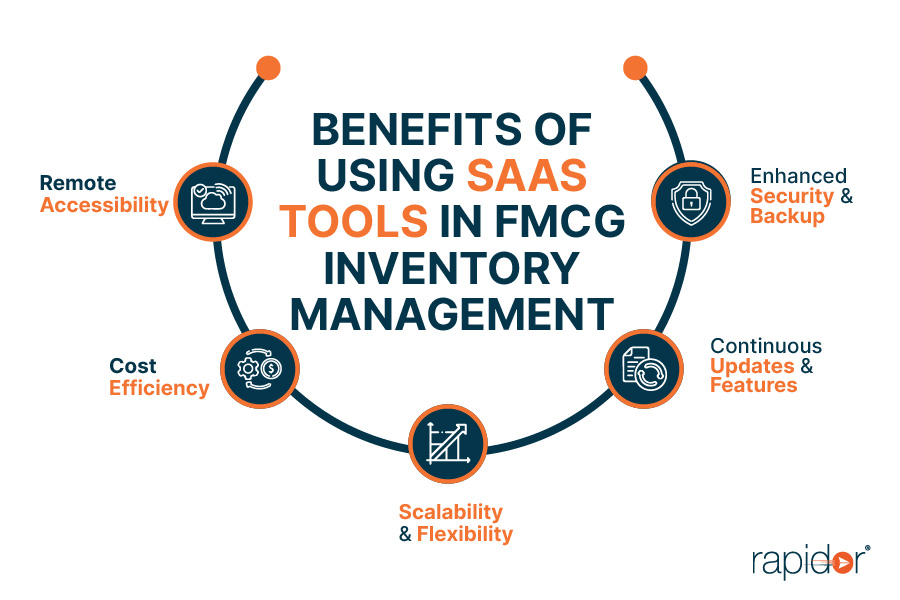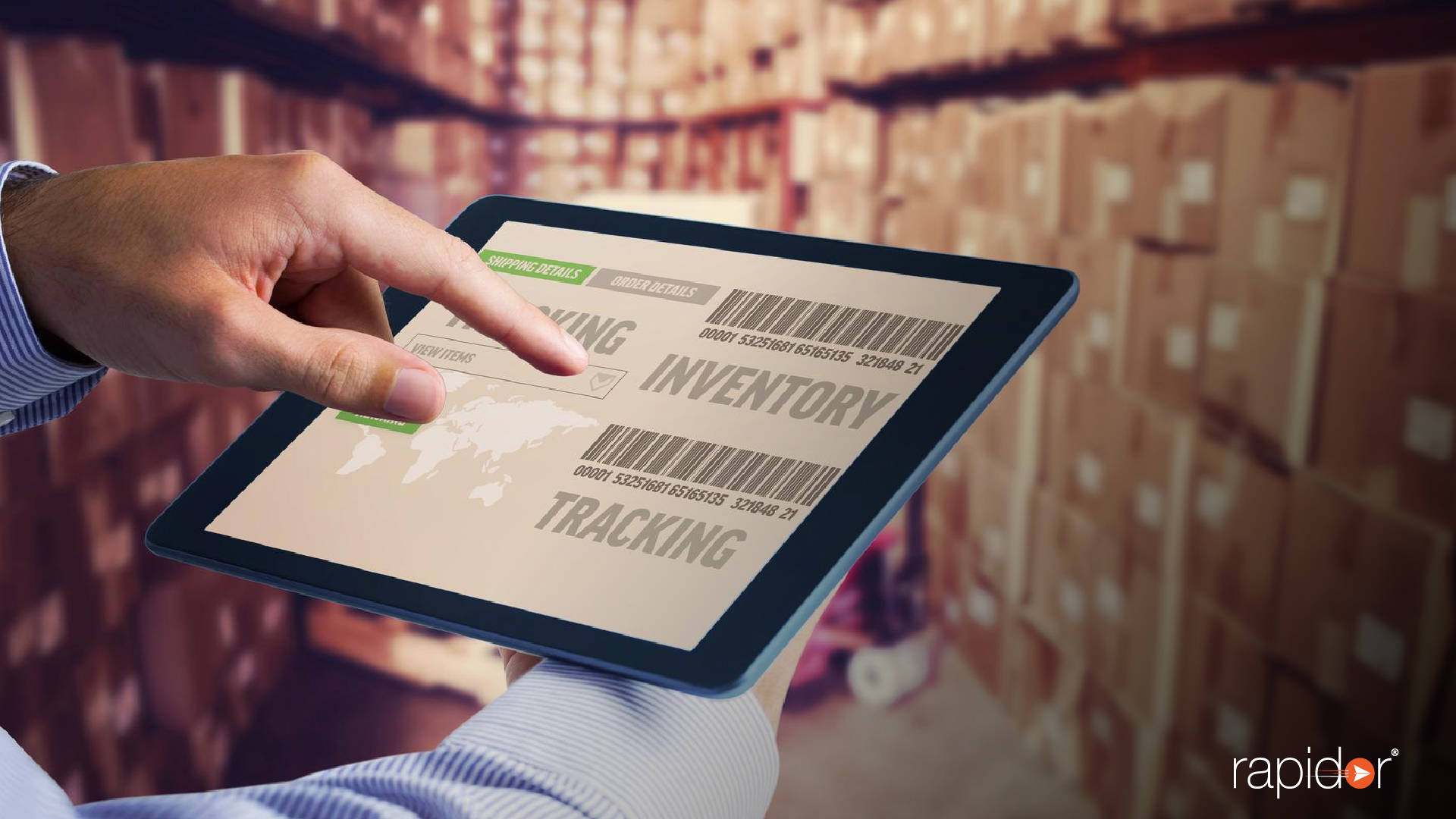Inventory management is a critical aspect of the fast-moving consumer goods (FMCG) industry, where products have a short shelf life and demand fluctuates rapidly. Efficient inventory management is essential to meet customer demands, reduce wastage, and ensure timely deliveries. However, FMCG businesses encounter unique challenges in maintaining the delicate balance between demand and supply.
The FMCG sector’s significance lies in its ability to cater to consumers’ everyday needs with products like food, beverages, personal care items, and household essentials. Effective inventory management ensures that these products are available when and where consumers need them. Yet, FMCG companies must grapple with high sales volumes and low profit margins, necessitating optimization at every step to remain competitive.
Additionally, seasonal demands and market fluctuations make forecasting a formidable task, as consumer preferences shift with changing trends. Furthermore, FMCG products often have rapid shelf-life turnover, demanding agile inventory practices to prevent spoilage and obsolescence. In this blog, we will delve into the unique challenges faced by FMCG businesses in managing inventory and explore solutions to overcome them, including the role of specialized SaaS tools in FMCG inventory management.
The Unique Challenges of FMCG Inventory Management
The FMCG industry operates on a high-volume, low-margin business model, where products have a swift turnover rate. These goods, such as food, beverages, and personal care items, are consumed on a daily basis, driving continuous demand and frequent restocking. With slim profit margins, FMCG businesses must optimize every aspect of their operations to ensure profitability.
High Volume, Low Margin Business
FMCG goods experience rapid sales turnover due to their essential nature in consumers’ lives. The constant demand for these products necessitates efficient inventory management to ensure uninterrupted supply and meet customer expectations. With tight profit margins, even minor inefficiencies in inventory management can significantly impact the bottom line. To remain competitive, FMCG companies focus on streamlining supply chains, reducing carrying costs, and adopting agile inventory practices to optimize profitability and maintain customer loyalty.
Seasonal Demands & Fluctuations
Seasonal products in the FMCG sector introduce an element of unpredictability. Demand for certain items can spike during specific times of the year, such as sunscreen in summer or hot beverages in winter. Accurate forecasting becomes crucial to anticipate these fluctuations and prevent stockouts or overstocking. FMCG companies need to closely monitor market trends, consumer behavior, and historical data to make informed decisions and adapt their inventory levels accordingly. Implementing specialized inventory management software with advanced forecasting capabilities can help businesses navigate seasonal challenges effectively.
Rapid Shelf-Life Turnover
A key challenge in FMCG inventory management is the rapid shelf-life turnover of products. Many FMCG goods, especially perishable items like fresh produce and dairy products, have limited expiration dates. Managing stock rotation and adhering to the “first-in, first-out” (FIFO) principle are vital to prevent waste and spoilage. Effective inventory control ensures that products are sold before they reach their expiration dates, reducing losses and enhancing overall profitability.
Traditional Inventory Management Techniques in FMCG
Various traditional inventory management techniques have been employed by FMCG businesses to maintain efficient supply chains and optimize inventory levels.
ABC Analysis
ABC analysis categorizes products based on their importance and sales contribution. Category A includes high-value and high-demand items, Category B comprises moderate-value products, and Category C consists of low-value and low-demand items. This classification allows businesses to prioritize inventory control efforts, ensuring optimal stocking levels for each category.
JIT (Just-In-Time) Method
The Just-In-Time method aims to minimize inventory carrying costs by receiving goods only when needed for production or sale. By reducing stockpiles, businesses can cut storage costs and enhance cash flow. However, relying solely on JIT can leave companies vulnerable to supply chain disruptions or unexpected demand surges.
Safety Stock Inventory
Safety stock inventory acts as a buffer to address uncertainties in demand and supply. It involves maintaining a reserve of products beyond regular demand levels to prevent stockouts during unexpected fluctuations or delays in supply. Safety stock provides a cushion for businesses and ensures customer demands are met even in unpredictable situations.
Economic Order Quantity
Economic Order Quantity (EOQ) is a calculation that determines the optimal order quantity to minimize holding costs and order costs. By striking a balance between holding excess inventory and frequently placing small orders, FMCG companies can reduce costs and maintain efficient inventory levels.
Reorder Point Formula
The reorder point formula calculates the inventory level at which a new order should be placed to replenish stock before it runs out. It considers factors like lead time, average demand, and safety stock. This technique helps FMCG businesses avoid stockouts and ensure continuous supply to meet customer demands.
Exploring Specialized Software for FMCG Inventory Management
Efficient inventory management is crucial for FMCG businesses to ensure uninterrupted supply, minimize costs, and meet customer demands. Specialized software solutions offer advanced features that streamline inventory control processes and provide a competitive edge.
Real-time Data Analysis
Timely data is vital for FMCG inventory management as it allows businesses to monitor stock levels, track sales trends, and identify demand patterns in real-time. Access to accurate data facilitates quicker decision-making, enabling businesses to adjust inventory levels, plan promotions, and respond promptly to changing market conditions.
Integration with Other Business Functions
Specialized inventory management software offers seamless integration with various business functions, including sales, marketing, and finance. This synchronization ensures all departments have access to up-to-date inventory information, enabling better coordination and collaboration across the organization. An integrated system enhances efficiency, reduces manual errors, and provides a holistic view of business operations.
Automated Forecasting
Inventory management software equipped with AI and machine learning capabilities enables automated demand forecasting. By analyzing historical sales data, market trends, and other relevant factors, the software predicts future demand more accurately. Automated forecasting helps FMCG businesses plan production schedules, optimize inventory levels, and minimize excess stock, reducing the risk of stockouts and overstocking.
Easy Reporting & Visualization
The ability to generate easy-to-understand reports and visualize inventory data at a glance is essential for FMCG businesses. With clear insights, managers can make informed decisions quickly, such as adjusting inventory levels, identifying slow-moving products, and optimizing stock rotation strategies to maximize shelf life and minimize wastage.
Reducing Wastage through Efficient Inventory Rotation
Specialized inventory management software supports inventory rotation strategies like First-In-First-Out (FIFO) and First-Expired-First-Out (FEFO). These techniques ensure that products with the shortest shelf life are sold or used first, minimizing wastage due to expired or obsolete items. Software automation helps maintain optimal inventory rotation, reducing losses and improving overall operational efficiency.

Benefits of Using SaaS Tools in FMCG Inventory Management
FMCG businesses are increasingly turning to Software-as-a-Service (SaaS) tools for inventory management due to the numerous advantages they offer in streamlining operations and improving efficiency.
Scalability & Flexibility
SaaS tools provide the scalability and flexibility FMCG businesses need to adapt to changing demands and business growth. As the business expands or experiences seasonal fluctuations, the software can accommodate increased inventory volumes and transaction volumes without the need for significant infrastructure investments.
Remote Accessibility
SaaS inventory management systems allow real-time access to inventory data from anywhere, making it ideal for distributed teams. Managers can monitor stock levels, sales, and supply chain activities remotely, enabling faster decision-making and enhancing collaboration among team members.
Cost-Efficient
SaaS tools offer a cost-efficient solution for FMCG inventory management. They eliminate the need for on-premises infrastructure and maintenance costs, as everything is hosted and managed by the service provider. Additionally, SaaS models often follow a pay-as-you-go pricing structure, allowing businesses to scale costs based on their usage.
Enhanced Security & Backup
Data security is paramount in inventory management, and reputable SaaS providers implement robust security measures to protect sensitive information. These measures include encryption, access controls, and regular data backups. In the event of data loss or system failure, SaaS tools provide data recovery options to ensure business continuity.
Continuous Updates & Features
SaaS tools are continuously updated by the service provider to incorporate the latest features, functionalities, and security enhancements. Businesses benefit from these updates without the need for manual interventions, ensuring they always have access to the most advanced tools for efficient inventory management.
Conclusion
In conclusion, specialized SaaS tools offer a transformative solution to the unique challenges faced by the FMCG industry in inventory management. By leveraging real-time data analysis, integration with other business functions, automated forecasting, and easy reporting, these tools empower FMCG businesses to make quicker and more informed decisions, optimize inventory levels, and reduce wastage. The benefits of using SaaS tools, such as scalability, remote accessibility, cost-efficiency, enhanced security, and continuous updates, make them an indispensable asset for FMCG businesses seeking to streamline their operations and stay competitive in a rapidly evolving market.
To ensure efficiency and stay ahead in the highly competitive FMCG sector, it is crucial for businesses to modernize and adapt to the latest technological advancements. Embracing specialized SaaS tools for inventory management is not only a step towards optimizing operations but also a strategic move to drive growth and profitability. FMCG businesses that embrace this digital transformation will be better equipped to meet consumer demands, respond to market fluctuations, and maintain a competitive edge in the industry. It is time for FMCG businesses to embrace these cutting-edge solutions and pave the way for a more agile and successful future.
FAQ
Q1: What is FMCG inventory management, and why is it important?
A1: FMCG inventory management refers to the process of overseeing and controlling the stock of fast-moving consumer goods. It is vital for FMCG businesses as it ensures the right products are available at the right time and in the right quantities to meet customer demand, avoid stockouts, minimize wastage, and optimize profit margins.
Q2: How can specialized SaaS tools benefit FMCG inventory management?
A2: Specialized SaaS tools offer several benefits for FMCG inventory management, including real-time data analysis for quicker decision-making, integration with other business functions for synchronization and efficiency, automated forecasting using AI and machine learning to predict demand, easy reporting and visualization for better insights, and strategies for reducing wastage through efficient inventory rotation using FIFO and FEFO strategies.
Q3: Can SaaS tools adapt to the changing needs of growing FMCG businesses?
A3: Yes, SaaS tools are highly scalable and flexible, allowing them to adapt to the evolving needs of growing FMCG businesses. They can accommodate increasing inventory volumes, changing product lines, and expanding operations, providing businesses with the agility to stay ahead in a dynamic market.
Q4: Are SaaS tools secure for storing sensitive inventory data?
A4: Yes, reputable SaaS providers prioritize data security and implement robust measures to protect sensitive inventory data. They utilize encryption, access controls, regular backups, and compliance with industry security standards to ensure data confidentiality and integrity.
Q5: How do SaaS tools ensure continuous updates and features?
A5: SaaS tools are cloud-based, allowing providers to seamlessly roll out updates and new features without requiring manual intervention from users. Users automatically receive the latest software version, ensuring they benefit from the most advanced functionalities and capabilities for FMCG inventory management.


